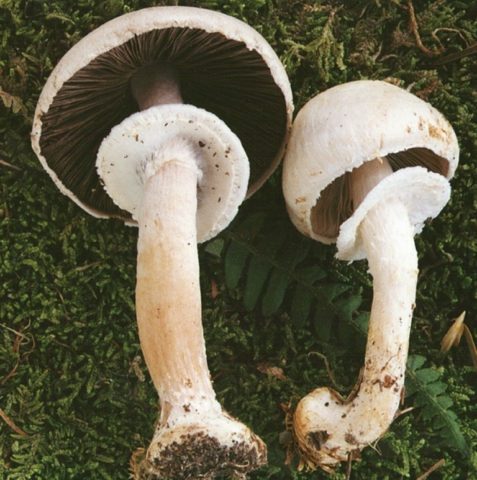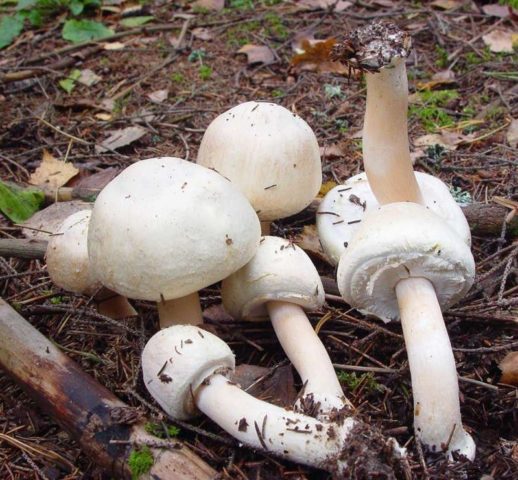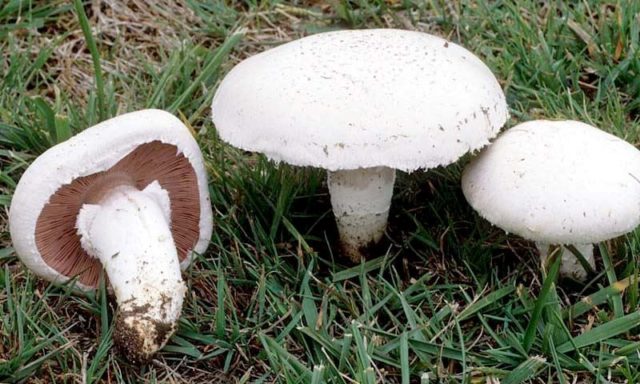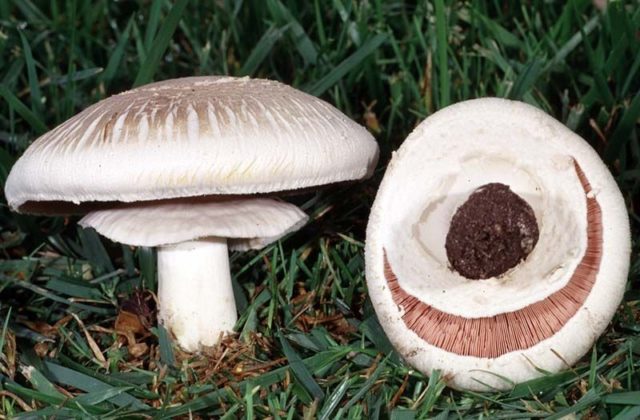Content
Curved or distinctly nodular champignon is an edible representative of the Champignon family. Grows among conifers from July to October. In appearance, it is very similar to a pale toadstool, therefore, in order not to harm your body, you must carefully study the description, view photos and videos.
What does a champignon curve look like?
A hat with a diameter of 10 cm at a young age resembles a dull bell; over time, the surface straightens and becomes flatly rounded. It is covered with a gray-white velvety skin that can be easily removed during cleaning. The bottom layer is formed by thin dark plates covered with a dense film. As it grows, it breaks through and descends on the leg in the form of a skirt. Reproduction occurs by elongated spores, which are in a dark brown powder.
The leg is flat, cylindrical in shape, grows up to 8 cm. The velvety surface is painted to match the cap and becomes hollow with age. The pulp is dense, light yellow in color, with pressure and with mechanical damage, a small yellow spot remains. The species has a light aniseed aroma and mushroom flavor.
Where the champignon grows distinctly nodule
Curve champignon prefers to grow in coniferous forests, on a needle-like substrate. Occurs in single specimens and in small families.
Is it possible to eat the champignon curve
The species is edible, it tastes as good as field champignon. It is used fried, boiled and canned. Before cooking, the mushroom harvest is cleaned from the ground and the film is removed. They can also be dried and frozen. The frozen product is stored for no more than a year, the thawed mushrooms are not frozen again.
False doubles
Curve champignon, like any representative of the mushroom kingdom, has twins. According to its external characteristics, it can be confused with the following types:
- Field champignon - an edible specimen with good palatability. It grows on sunny lawns, in grass, in urban areas, along roads. Fruiting from May to October. The species is distributed throughout Russia.
- Yellow-skinned - a poisonous specimen, when eaten causes severe food poisoning. The mushroom can be recognized by its yellow-white surface with brownish speckles in the center. When pressed, a yellow spot appears. The pulp is brown in color. When cooked, a strong phenolic odor appears.
Collection rules and use
Collecting crooked champignon is carried out in the morning, in clear, dry weather. Found mushrooms are not cut, but carefully twisted. The resulting hole is covered with grass or earth. Since the mushroom, like a sponge, absorbs all harmful substances, the collection should be carried out in ecologically clean places, far from roads and industrial enterprises.
Mushrooms are great for preparing fried, canned dishes, and they also make delicious and aromatic soups.
Curve champignon is not recommended to use:
- pregnant and lactating women;
- children under 7 years old;
- people with gastrointestinal diseases;
- with individual intolerance.
Conclusion
Curve champignon is a delicious, aromatic mushroom that grows in coniferous forests. Since it has poisonous fellows, it is necessary to carefully study it before going on a quiet hunt. Seasoned mushroom pickers recommend, in order not to harm themselves and their loved ones, to pass by old and unknown specimens.












